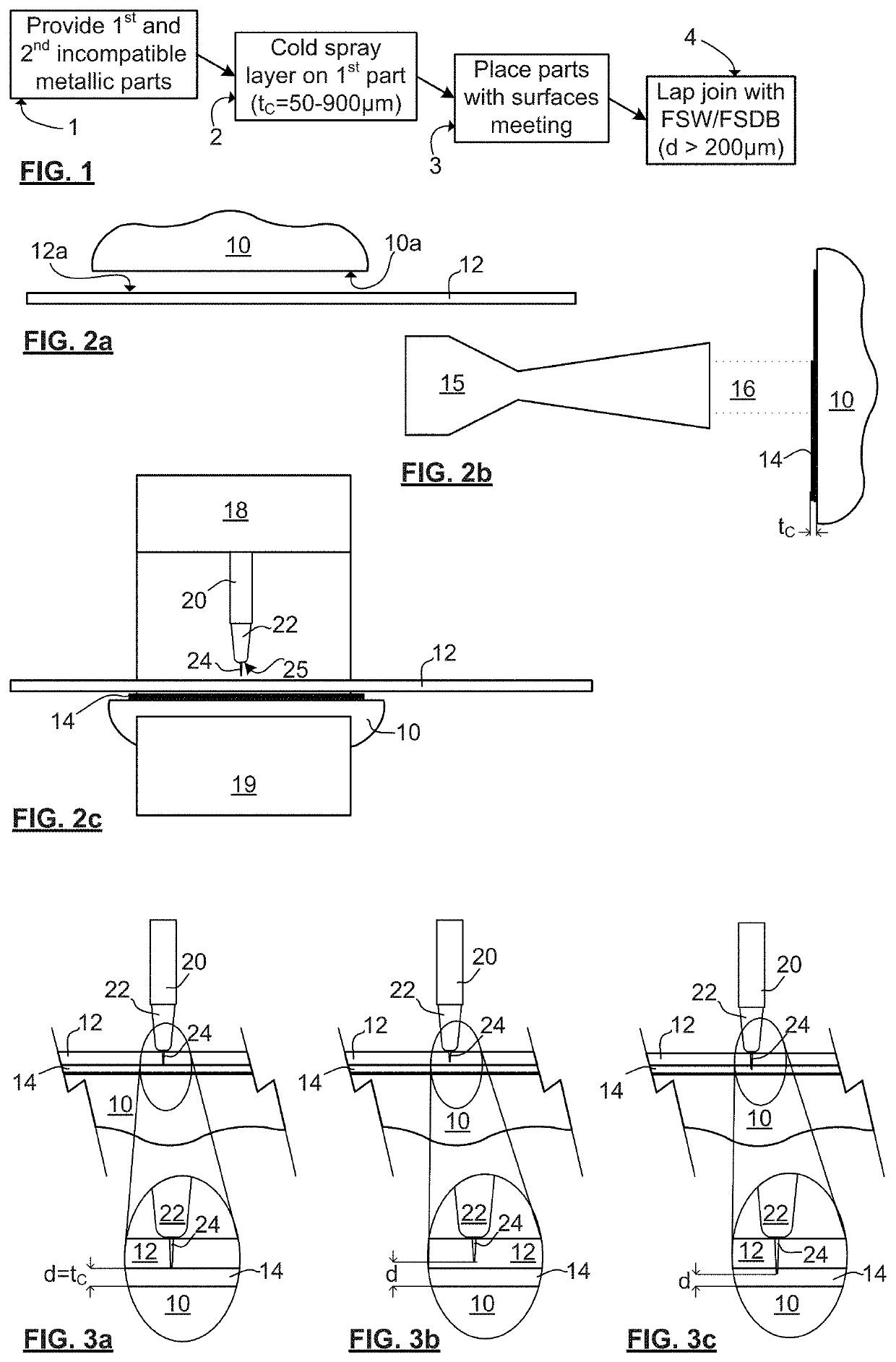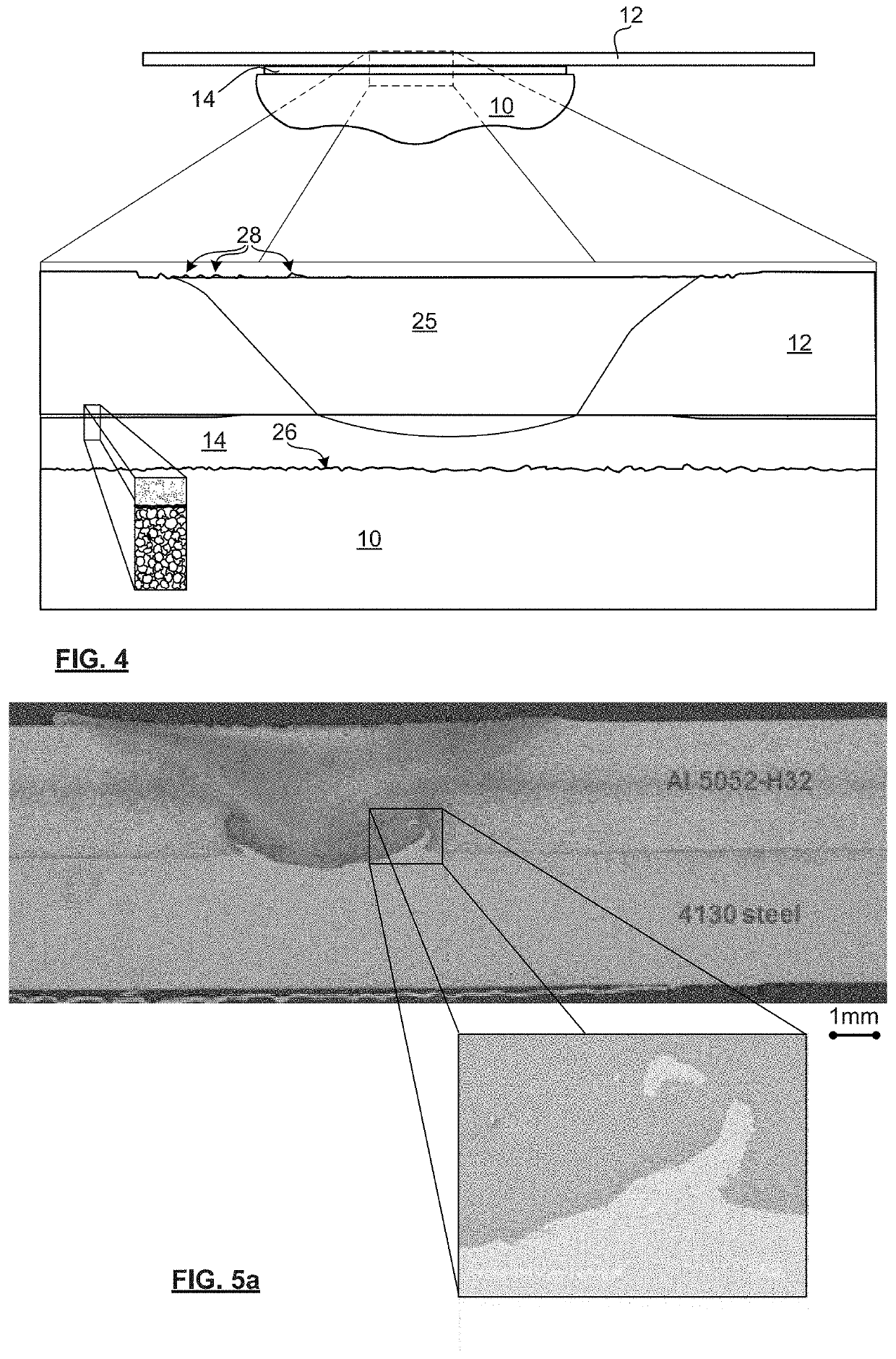Joined incompatible metallic parts and method of joining
a technology of incompatible metallic parts and joints, applied in the direction of mechanical equipment, non-electric welding equipment, manufacturing tools, etc., can solve the problems of no literature work on friction stir welding of magnesium to copper, no high-production rate application, and the intermetallics are considered problematic for mg—fe, so as to reduce the fatigue life of the joint and improve the joint fatigue life
- Summary
- Abstract
- Description
- Claims
- Application Information
AI Technical Summary
Benefits of technology
Problems solved by technology
Method used
Image
Examples
example 1
[0068]FIG. 5a is a micrograph showing a cross-section of a conventional Al-steel friction stir weld. An enlargement shows steel fragments that were entrained in a plasticization during the FSW process. These particles remain frozen in the otherwise Al matrix. The join of FIG. 5a was made using a conventional FSW approach, which means that a pin tool is designed to be slightly longer than the top sheet (generally between 0.3-1.0 mm longer). As the Al sheet was 3 mm thick, the tool pin length was 3.6 mm. The tool material can be a hardened steel (H13, D2, etc. . . . ) but wear issues are encountered doing so. It is preferable to use a W-based tool material to prevent tool wear although wear issues are still possible in a production environment with this material. This specific bond was created with a tool composed of W-15 / 20% Co. The W-based tool consisted of a conical pin without features, such as threads, flats or flutes, because these features are harder to manufacture in this mate...
example 2
[0076]A range of thicknesses of coatings, and plunge depths tool pin depths, were examined, and it was found that a distance d greater than 250 μm was critical for an lxxx series Al cold sprayed coating, and that a distance d of 550 μm was sufficient. As will be appreciated by those of skill in the art, other minimum distances may be required for other materials, and the minimum distance d can be determined for other material systems in a like manner, using ordinary skill in the art.
[0077]FIG. 7 includes micrographs of a first join and a second join, and respective enlargements, showing a join with a coating that failed during FSJ processing, in comparison with a working join. Both joins were made according to the method described in relation to FIG. 5b by cold spraying a layer deposited into a cold rolled steel sheet (low carbon steel). The only difference is that in the first join (top), the tool length was 2.15 mm, which penetrated into the cold sprayed Al coating by about 0.15 m...
PUM
| Property | Measurement | Unit |
|---|---|---|
| thick | aaaaa | aaaaa |
| wt. % | aaaaa | aaaaa |
| thick | aaaaa | aaaaa |
Abstract
Description
Claims
Application Information
 Login to View More
Login to View More - R&D
- Intellectual Property
- Life Sciences
- Materials
- Tech Scout
- Unparalleled Data Quality
- Higher Quality Content
- 60% Fewer Hallucinations
Browse by: Latest US Patents, China's latest patents, Technical Efficacy Thesaurus, Application Domain, Technology Topic, Popular Technical Reports.
© 2025 PatSnap. All rights reserved.Legal|Privacy policy|Modern Slavery Act Transparency Statement|Sitemap|About US| Contact US: help@patsnap.com



